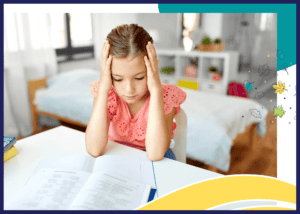Navigating Friendships for Kids with ADHD: A Guide for Parents
Many teens with ADHD experience ups and downs in friendships. While neurodivergent teens often encounter social challenges, they can also enjoy meaningful friendships, which can provide a sense of belonging, boost self-esteem, and act as a buffer against bullying and social isolation. Recently, a lecture at the 2024 ADHD Conference put on by the Centre for ADHD Awareness Canada (CADDAC) called “Hanging In to Hanging Out,” led by Lanni Zinberg-Swartz, a speech pathologist with extensive experience in supporting neurodivergent children, offered a wealth of strategies for parents to help their teens improve their social experiences. Here, we’ll dive into some of the session’s key concepts, research findings, and a practical framework called RAMPS to empower teens in building and maintaining fulfilling friendships.
Understanding the Value of Friendship for Neurodivergent Teens
Friendships provide more than just companionship for teens; they are a crucial part of personal growth, self-worth, and emotional resilience. While neurodivergent teens might face hurdles in social settings, friendships can be deeply supportive by providing an environment where they feel understood.
However, research shows that teens with ADHD often face notable challenges. Studies indicate that 50-80% of these teens struggle to form friendships that are mutual and long-lasting, and the quality of these friendships may be lower compared to those of neurotypical peers. Many also experience fewer friendships overall, which can lead to increased risks of loneliness, bullying, and low self-esteem. Addressing these issues early and providing the right support can make a world of difference.
The Shift from “Hanging In” to “Hanging Out” (HI-HO)
The HI-HO service, short for “Hanging In to Hanging Out,” was emphasized by Lanni Zinberg-Swartz, director at Connections SLP at her lecture. The idea behind this group highlights the transition from a passive to an active approach in friendships. Instead of teens with ADHD simply “hanging in” and waiting for opportunities to arise, or things to just get better or easier, teens are taught and practice skills that enable them to seek out and engage in social activities, with parental support where needed. HI-HO emphasizes that parents can play a supportive role by helping teens feel comfortable in social settings, understand their social strengths, and provide gentle nudges toward activities that might lead to meaningful connections. This group helps teens to actually “hanging out” by giving them specific strategies they can use to build friendships.
This group encourages a proactive approach, transforming the idea of friendships from something that “just happens” or gets better on its own, to something teens can actively build.
A Glimpse into the RAMPS Framework
RAMPS, which stands for Regulation, Activities, Motivation, People/Place/Positivity, and Situational/Self-awareness, provides a structured approach to building friendships. Here’s a breakdown of how each component of the framework can be used to support teens as they navigate social dynamics. Although RAMPS is not a set guide for teens themselves in any single social interaction, it is a useful framework that parents and other caring adults can use to consider a number of areas that can support the formation of mutually enjoyable friendships.
1. Regulation
Regulation is about managing emotional and physical responses to stay balanced in social interactions. Helping teens recognize their energy levels and stressors is key to finding their emotional “sweet spot” for social interactions.
Encouraging co-regulation, where others help manage emotional states, is also beneficial. This could mean that parents or close friends gently help the teen to modulate their energy levels to match different social situations, reinforcing a sense of safety.
2. Activities
Choosing the right activities is often a gateway to forming friendships. Teens are more likely to engage in activities when they align with their interests. If a teen loves art or gaming, joining a related club or group can lead to shared experiences, a foundation for friendship. Parents can support by guiding teens toward clubs, teams, groups or events that align with their passions.
It’s crucial that teens feel they have a say in these choices—imposed activities are less effective. When teens actively choose, they’re more engaged and motivated to participate, increasing the chances of connecting with like-minded peers.
3. Motivation
Motivation in ADHD is unique, often driven by an interest-based nervous system that thrives on novelty, challenge, and urgency. Tasks that are intrinsically interesting or have immediate deadlines tend to capture attention more easily than long-term projects or low-stakes activities.
Understanding this can help parents encourage activities that will keep teens engaged and socially active. For instance, a team project or a challenging game could be more enticing and create opportunities to bond with peers over a shared goal or fun experience.
4. People, Place, and Positivity
Considering “who, where, and how” is essential for social success. Teens with ADHD might have more positive experiences with friends who share their interests or communication styles. It’s also important to consider the setting—a relaxed environment, such as home, may be less overwhelming than a crowded public place. Positivity also plays a big role; emphasizing strengths and offering praise for social efforts can increase a teen’s confidence in friendships.
Encourage friendships with peers who are kind and understanding, as these qualities can make a big difference for teens who might be sensitive to rejection or misunderstandings.
5. Situational/Self-awareness
Situational awareness means understanding social cues in a particular context. Teens with ADHD might miss subtle cues, such as body language or tone, which can lead to misunderstandings. Helping them practice “reading the room” can improve their social skills and enhance their confidence. This might involve discussing scenarios or planning ahead for tricky situations and practicing ways to navigate them to help teens better recognize social dynamics (due to executive functioning challenges).
Self-awareness, on the other hand, is about knowing their own strengths, challenges, and personal needs in friendships. For instance, a teen who understands they are more impulsive can work on strategies to listen more and pause before responding in conversations. Developing self-awareness is key to making choices that foster compatible and fulfilling friendships.
Key Research Findings on ADHD and Friendship
The session highlighted findings from a number of studies, one of which examples friendships among kids and teens with ADHD. These studies reinforce the need for targeted support, with key findings including:
- Fewer friendships: Teens with ADHD often have fewer friendships, and many experience significant challenges in forming mutual connections.
- Lower-quality friendships: Many teens with ADHD experience friendships with less emotional depth, characterized by limited shared activities and support.
- Age factor: By around age 7, some of these social struggles may already be evident, underscoring the value of early intervention.
- ADHD subtype impact: Teens with inattentive ADHD may face social neglect, while those with hyperactive-impulsive traits are often more neglected or actively rejected, affecting their self-esteem.
These findings underline the importance of early, consistent support to help teens build healthy relationships that counteract potential feelings of isolation and loneliness.
Communication and the Role of Parents in Friendship Development
Parents play an essential role in guiding teens through friendship-building. Effective communication, however, is about balance. Teens are often sensitive to feeling overly scrutinized or directed, so getting permission to talk about friendships is important. When teens know they have control over these conversations, they may feel more open to discussing their challenges and goals.
Using empathic comments rather than probing questions also helps teens feel understood and heard. For example, saying, “I noticed you seemed really excited about that club,” can feel more supportive than asking direct questions like, “Do you have any friends there?”
Striking a balance between support and autonomy is key. Parents can guide and offer advice, but it’s equally important to let teens make their own choices in friendships, helping them learn from their experiences and grow.
Online Friendships: A Unique Support System
Online friendships can offer a vital support system for neurodivergent teens. Virtual connections can sometimes feel easier for teens with ADHD, who might find face-to-face interactions challenging. Online spaces can also help them connect with others who share similar interests, reducing feelings of loneliness and helping them build confidence.
However, it’s important for parents to set guidelines around online interactions, ensuring these friendships remain positive and safe.
One Meaningful Friendship Can Make All the Difference
The power of one close friend shouldn’t be underestimated. Having even one friend can provide emotional support, boost self-esteem, and reduce the risk of social isolation. For teens with ADHD, a single supportive friendship can be a foundation for learning social skills, understanding boundaries, and feeling valued.
Building Awareness of ADHD: A Foundation for Social Success
Helping teens understand their ADHD diagnosis can be a turning point in their social journey. Self-awareness enables them to recognize their strengths and challenges, empowering them to seek out compatible friendships. When teens understand that they might be more impulsive or find it difficult to “read the room,” they can take proactive steps to improve.
Knowledge of ADHD also helps parents, educators, and mental health professionals create more supportive social environments. Teens with ADHD can thrive in friendships, given the right tools, self-understanding, and supportive adults who respect their needs.
Friendships can be a source of joy, growth, and resilience for teens with ADHD, even if building and maintaining these connections may present unique challenges. By using frameworks like RAMPS, parents can support their teens in building the skills and confidence they need to foster fulfilling friendships. Empowered with strategies tailored to their interests and needs, teens with ADHD can thrive socially, enjoying the invaluable companionship and connection that friendships bring to their lives.
The information from this blog is based on Lanni’s fabulous lecture at the 2024 ADHD Conference, as mentioned above. Lanni and her team provide individual and group support to children, teens and families that are focused on building friendships and positive relationships for children and youth of all ages. From Hanging In to Hanging Out is one of the many services Connections SLP runs for youth from grades 7-12; others include PlayGreat for children in grades 2-6, and Friendship Foundations for children ages 4-7. To learn more about Connections SLP Services, please visit their website here: https://connectionsslp.ca/our-services/





